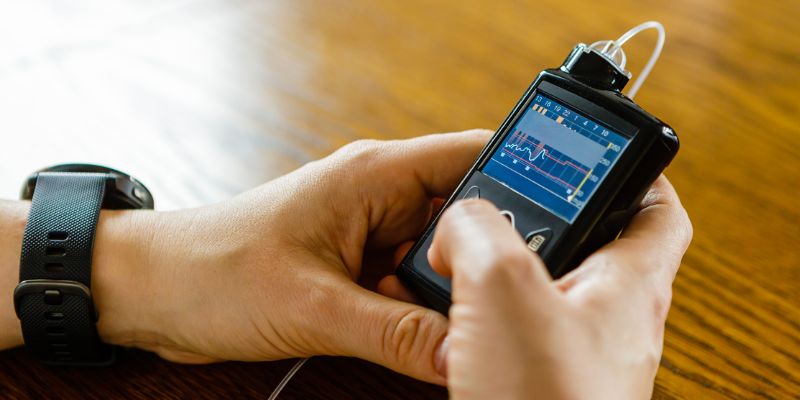Insulin pumps are designed to be fairly durable and so most of the maintenance is to do with keeping the pump’s insulin reservoir topped up with insulin and ensuring batteries are changed when necessary.
The maintenance required with an insulin pump is more involved than is the case with using an insulin pen , however, maintenance procedures are only usually needed once every 2 or 3 days.
Re-filling insulin
Most insulin pumps can hold around 200 to 300 units of insulin Most people will find that this is enough insulin for around 3 to 5 days or so.
When the pump reservoir starts to run low on insulin, it will sound a warning, alerting you to refill the pump with insulin at the next opportunity.
It is advisable to allow insulin to reach room temperature before using it to refill your pump as this helps to prevent bubbles forming in the reservoir. If insulin is used straight from the fridge, to refill your pump, bubbles may form in the reservoir as the insulin warms up to room temperature.
Replacing batteries
Battery life can vary from one pump to another but you can expect to need to change the battery anywhere between a few times a year to once every two or three weeks, depending on usage demands of the pump and the type of battery it uses.
The procedure for replacing batteries is usually relatively simple and the insulin pump manual will guide you through the process.
Your pump should alert you of when its battery is getting low to give you a number of hours notice within which to change the battery.
It is important to have spares of the batteries available so that you can change the battery within a few hours or so of the low battery warning.
Changing infusion sets
It is commonly advised to change your infusion set for a new set every 2 to 3 days. Changing infusion sets usually takes a few minutes and is best carried out at a time and place where you can get your infusion site clean and get your new infusion set organised.
- Read more about changing infusion sets
Temperatures for your pump
Ideally, it is best to keep your insulin pump in temperatures close to that of normal room temperature (around 20 degress celcius), so that the insulin is kept in top condition and to help prevent bubbles occurring in the pump in response to temperature change
Inevitably, there will be times when your pump will be exposed to colder or warmer temperatures. This shouldn’t usually be a problem if the pump is not exposed to very warm or cold temperatures for lengthy periods of time.
If the weather is either very cold or very warm, it’s advisable to take measures, where possible, to protect the pump from getting either too hot or too cold for too long. Measures could include keeping your pump well covered in very cold weather or spending time in the shade during warm days



